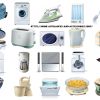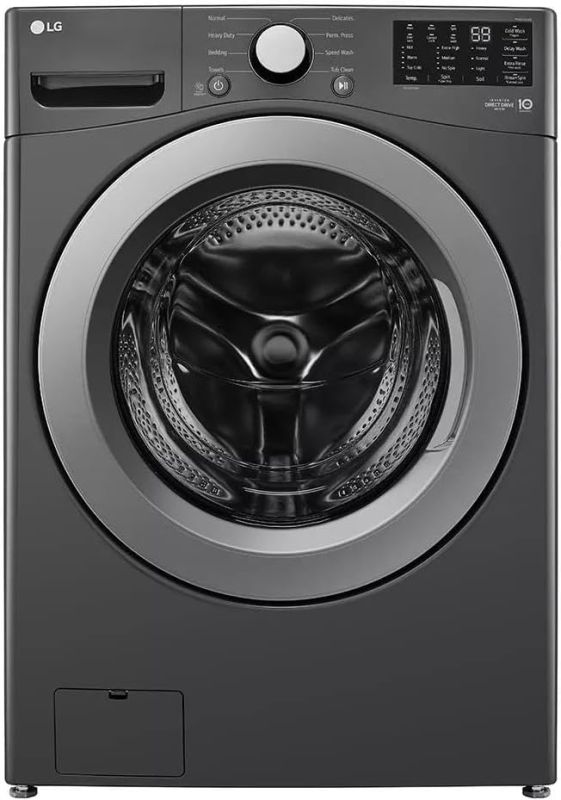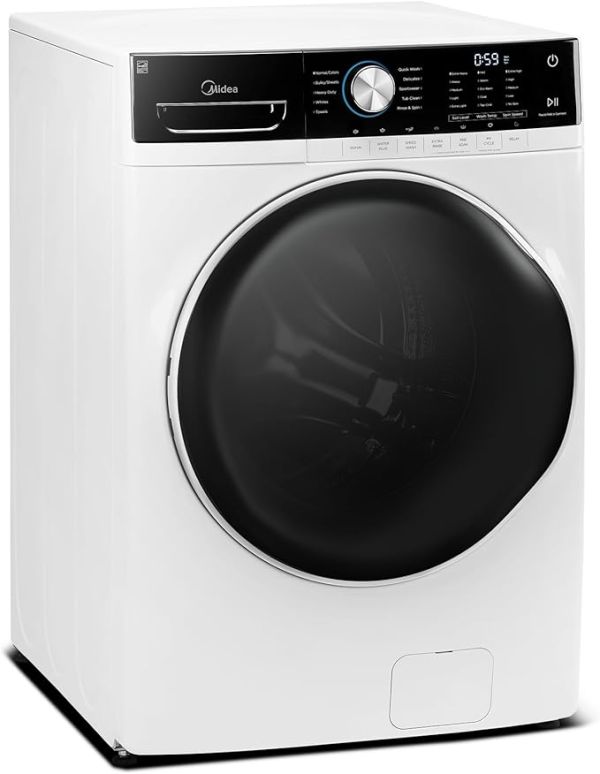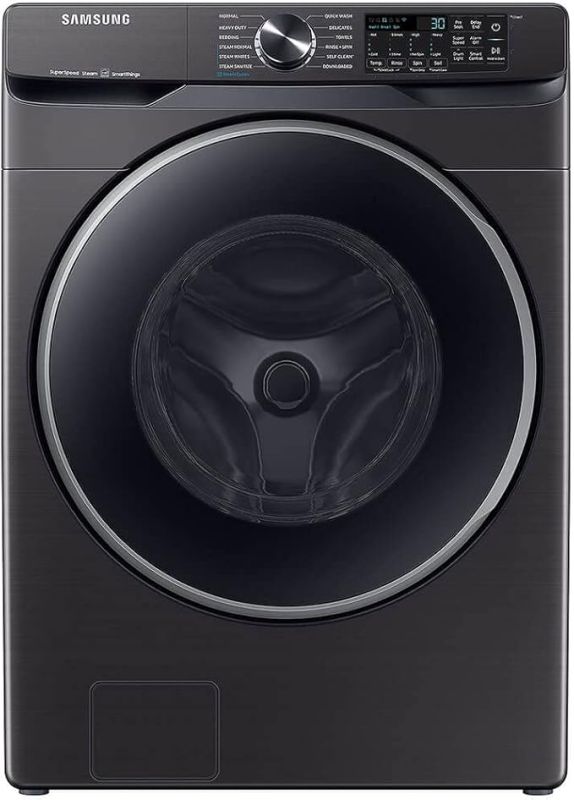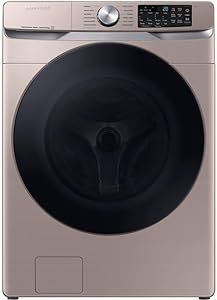How to choose a washing machine

When buying a washing machine, we want it to perform its functions perfectly for many years, be reliable, easy to use, and save us from unnecessary trouble. Therefore, choosing such an important appliance for everyday life should be taken seriously. So, how do we choose and buy a washing machine from the variety of manufacturers and models available? This is the topic of our discussion.
Type of washing machines
When it comes to automatic washing machines, many people don't even realize that there are other types of these devices available besides the standard ones. These include dryers, machines with a dryer function, and the most basic semi-automatic models. The latter are the least expensive type of washing machine, as they only wash clothes and don't rinse them. The spin cycle is usually separate from the main body of the machine, which may not be convenient for some users.
In washing and drying models, the drying cycle is activated after the spin cycle. The clothes are blown with warm air jets, and the drum turns at a slower speed. The temperature and dryness of the clothes can be adjusted, from slightly damp (which can be ironed right away) to completely dry (if the items don't need ironing). This is very convenient because it eliminates the need to hang clothes to dry in the bathroom or on a balcony. This saves both time and space.
Unfortunately, the drying function of a machine increases its cost and, with frequent use, wears out laundry, causing things to lose their appearance faster. In addition, it is not possible to dry all washed clothes in a dryer at once. A machine with a capacity of 6 kilograms can dry only 3 kilograms of laundry and costs 20-30% more. If you need greater productivity and money is not a priority, then a dryer might be a better option.
Drying Machines
In recent years, drying machines have become popular despite their significant cost. They not only dry laundry, but also eliminate unpleasant odors and dust, as well as animal hair. To refresh clothes like they would after washing, simply run them through the dryer. Additionally, the dryer cleans mats, blankets, and pillows by removing dust with air jets. Externally, the dryer looks very similar to the washing machine. It has the same modern design and standard dimensions, and the laundry is loaded from the front. Instead of water, however, the drum is filled with air heated to 70 degrees Celsius, which blows over the laundry to dry it. To filter out any dust or lint, dryers come equipped with special filters and dust collectors. The speed of the dryer's drum is much slower than that of a washing machine, ranging from 50 to 100 revolutions per minute.
The air temperature and drum rotation speed can be adjusted depending on the drying mode. Due to the larger drum size, 5-6 kg of laundry can be dried in one cycle, and up to 10 kg in larger dryers. The bigger the drum volume, preferably not less than 100 liters, the better and more carefully the machine will dry the laundry.
In addition to productivity, the main advantages of dryers include disinfection of laundry, as drying takes place at a high temperature and high speed - 15–20 minutes - and special gentle modes, after which laundry hardly needs ironing.
Type of loading
All washing machines can be divided into two groups depending on the type of loading: vertical and frontal. We should note that the type of loading does not affect the quality of washing but is determined by the design of the machine or the preference of the user. Front-loading washing machines allow you to increase the usable volume of the drum. Some modern models can hold up to 12 kilograms of laundry in one cycle. However, it's not just because of this that front-loaders are more popular. Their prices are usually lower, and there are a wider variety of models available. They are also more convenient to install in a spacious bathroom or kitchen, as they take up less space. Vertical loading is convenient because you can easily add a forgotten item to the drum during the washing cycle, or remove an item that was mistakenly added, such as a colored blouse accidentally thrown into white underwear. There's no need to bend over to put items in the drum, which can be helpful for people with back problems. In addition, vertical loading machines are often more compact and can fit in smaller bathrooms. If you have children, they won't be able to access the control buttons on the top of the machine, which is a safety feature. However, the main disadvantage of these machines is that they can only handle a limited amount of laundry, typically 5–7 kilograms.
Installation type and dimensions
In addition to functional differences, front-loading washing machines can also be categorized by their installation type. There are two main options: freestanding and built-in models.
A freestanding washer can be used as an extra work surface in your kitchen or as a cabinet in your bathroom.
Built-in washers can be installed under the counter in your kitchen, with the front panel either visible or hidden behind a door, depending on whether you want to preserve the overall look of your kitchen or bathroom design. Embedded models are typically more expensive, but they produce much less noise due to their design and the fact that they are firmly fixed to the inside surfaces of the space where they are located. These are typically found in kitchens, while freestanding models are more often installed in bathrooms. Washing machines with vertical loaders have similar dimensions. The average height is around 85–90 centimeters, the width 60 centimeters, and the depth 40–45 centimeters.
Front-loading washing machines come in a variety of sizes, ranging from full-sized to narrow and compact models. Before purchasing, it's important to consider where you will be placing the machine, as even a small error in measurement can prevent proper installation. The average height of a front-loader is 85 centimeters, width is about 60 centimeters, and depth ranges from 32 to 60 centimeters. Naturally, smaller models have smaller drums and can hold less laundry.
Washing machine classes
According to the unified standard, washing machines are classified based on their performance and energy efficiency. The classes range from A to G, with A and B indicating high-quality washing and care for fabrics, while G is the lowest level. Laundry class: Most washing machines on the market fall into the "A" or "B" categories. A few machines are in the "C" category, and very few are in the "G" category. The differences between these classes are not significant, so it is unlikely that you would notice a difference between, say, an "A" machine and a "B" machine.
Spin class also ranges from "A" to "G", indicating the amount of moisture left in the laundry after spinning. "A" has only 40% moisture, and "G" has about 90%. With a high spin speed, you will get almost completely dry clothes, and they will take less time to dry. Also, with high extraction, all traces of rinse aid and detergent are removed along with moisture. Although high spin speeds can cause wrinkles, most good washing machines have a "no-crease" setting. Spin speed:
The most popular washing machines have a spin speed of around 1000–1200 revolutions per minute (rpm), although some models can reach up to 1600 or higher. However, these high-speed models require more powerful motors, which significantly increases their cost.
In practice, it is recommended that the spin speed for delicate fabrics should not exceed 400 rpm. For cotton, 800 rpm is usually sufficient, while 1000 rpm or more is suitable for thicker or terry fabrics. Energy efficiency class. With the introduction of the energy efficiency class, things have changed a bit. The specifications of the washing machine include an indicator that shows the power consumption during normal washing of a 1 kg cotton fabric at 60 degrees. Before 2002, there were the same grades from "A" to "G" for washing and drying. However, with the advancement of energy-efficient technologies, the "A+" energy efficiency class was added, followed by another and another.
Now, washing machines with the highest energy efficiency class are labeled "A+++" and consume less than 0.17 kWh of energy per kilogram of laundry. On the other hand, the lowest energy efficiency class "G", which corresponds to about 0.4 kWh/kg, is reserved for the most energy-intensive models.
Choosing a washing machine with a higher efficiency class, such as "A+" or above, will result in significant energy savings and lower electricity bills. Most modern models are already classified at least as "B", so you can expect good energy efficiency even without making a conscious effort.If you have already decided on the basic parameters of the washing machine, such as its washing class and spin speed, it's time to consider the preset washing modes. A modern automatic washing machine typically has about 10 to 20 different modes. While some of these modes may seem like a marketing ploy, they are actually more aimed at attracting attention than they are necessary. Therefore, you don't need to worry about having a large number of modes, as most of them may not be useful.
There are a few popular modes that are typically pre-installed in every washing machine, and these include options for different types of fabrics and washing methods. These modes include:
- Cotton
- Synthetics
- Wool
- Delicate
- Manual
- Fast
These modes cover most common laundry needs, so you don't need to chase after a wide variety of options. Instead, focus on finding a machine that has these essential modes and provides good performance.For each type of fabric and washing mode, you can select additional parameters such as temperature, rinse, spin speed, and intensity. For example, cotton clothes can be washed in an intensive mode with a water temperature ranging from "cold" to "90 degrees". You can also add a rinse and spin at a speed of 1,000 RPM.
Let's take a look at some of the most popular automatic washing modes:
Pre-wash: For heavily soiled items, a "Soaking" or "Pre-wash" cycle is often used. This is just the initial step before the main wash cycle, where the laundry is left in a detergent solution for about two hours, typically at a temperature of 30 degrees. After that, the selected wash cycle begins.
Half load: If you only have a small amount of laundry to wash, a "Half-load" cycle can be useful. It saves time, water, and energy by about 30%, compared to a full load.Quick wash: One of the most convenient modes on your washing machine is "Fast" or "Express" washing. This allows you to quickly wash slightly soiled or almost clean laundry. It's perfect if you don't need a full wash, but just want to refresh some items. For example, a sports uniform after a workout or a shirt that you wore for only a few hours. The duration of this cycle may vary depending on the manufacturer, but it usually takes between 15 and 30 minutes.
Bio-wash: Most modern washing machines have a "Bio" or "Enzyme" cycle. This cycle maintains the water temperature at 40 degrees for a specific time. This helps activate enzymes in the detergent, which break down organic pollutants like fat, sauce, coffee, sweat, and blood. These enzymes penetrate deep into the fabric, breaking down the impurities, which can then be easily removed with detergent.Washing children's clothes: If you have children in your family, the program "Washing Children's Clothes" will be a great help. It helps to preserve the softness of fabrics while carefully washing them. The washing process uses a lot of water at a high temperature to disinfect children's clothes and remove as much detergent as possible.
Air bubble technology is used in washing machines to help remove even the toughest stains. This technology uses a special generator to create a thick foam made from powder, water, and air. This foam can penetrate the fibers of clothing more effectively than regular water, helping to remove stains.
The "Leak protection" feature will help prevent water from spilling out of the washing machine if the supply hoses break or if there is an overflow. There are two types of leak protection: "Partial" protects only the supply hoses, while "Full" also monitors the water level inside the washing machine.
To protect the machine from excessive foam, there is a "Foam formation control" feature. If too much foam is formed during the wash cycle, the washing machine will stop automatically.Balance control. One of the most useful features in modern washing machines is "Balance Control". If items get tangled during the wash cycle, the program will adjust the direction of the drum's rotation several times to try and untangle them, as well as evenly distribute the laundry across the drum. If that doesn't work, the spin cycle will slow down to avoid excessive vibration. This feature can significantly extend the lifespan of your washing machine.
Child protection. If you have children in the household, flashing lights are sure to grab their attention. The "Child Protection" function, activated by pressing a specific combination of buttons, locks the controls of the washing machine so that the child cannot change the settings, even if they press all the buttons randomly.





